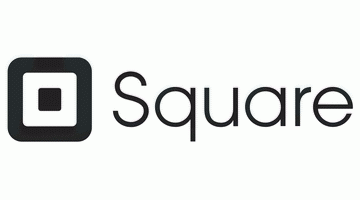Updated on November 22, 2021
Square and PayPal both have a huge influence over the payment processing world. A smooth transaction has been shown to increase the likelihood of future purchases, while less effective payment portals are likely to end with a disgruntled customer, or worse: an abandoned cart.
User experience has become just as important as product value or branding, with more users browsing on social media or other mobile apps. You don’t want a subpar payment experience to affect your company’s reputation, either.
Navigating so many new and growing features can fatigue even the savviest entrepreneur. Fortunately, the best platforms have your priorities in mind. Whether you’re looking to streamline eCommerce or in-person transactions, you likely want the same key features: reasonable pricing, ease of use, and basic function. You may also want technical support for those new to your POS system.
Let’s break down what each processing platform has to offer small businesses like yours.
We like Square’s free POS for on-the-go accessibility and is recommended for just about any startup or entry level business. Upgrading payment options at the farmer’s market? This card reader makes the transition smoother than you imagined possible! Incorporating online ordering for those in-and-out customers? Square helps eliminate any guesswork with its secure, all-in-one payment system.
A Square Account has a number of appealing tools, as well. Mobile sales are free and work on just about any device. You can easily implement recurring billing options and initiate full or partial refunds without a problem.
Square’s dashboard makes managing day-to-day functions a breeze. You can even use their platform to track behavior patterns and safely store card information, making it easy for customers to buy from you down the road!
On the flipside, Square is trickier to use for international sellers. If you rely on international traffic for sales, you might find Square’s lack of support disappointing. PayPal, however, does allow you to scale your business with eCommerce functionality.
Looking at pricing, it’s a close call: both services limit charges beyond transactional fees. You might prefer PayPal for low-ticket items and nonprofit discounts online, but Square’s lower rate still fares well with high-volume traffic. Square’s free virtual terminal might also appeal to the average merchant, unlike that of PayPal.
Speaking of free, both companies allow payment processing without the monthly fee. Both also offer development kits that provide reliable payment options for mobile card readers. That’s a win-win, if you ask us!
PayPal shines when you look at its performance on POS apps. Like we mentioned above, you can use PayPal to easily process international sales, making it the clear choice for eCommerce merchants. Its reporting features have improved in recent years, thanks to the growing need for average sale size and buyer trends. Both platforms bring a breadth of information to your fingertips, allowing you to anticipate changing transactional needs.
Some perks to this kind of access: new features like access to debit card funds, which might appeal to small-ticket merchants. If you’re moving to sell more through apps like Facebook, Square hasn’t quite caught up yet. PayPal would be a workable option, as would Shopify (which can have a PayPal button added as a secondary option). This might be best if you intend to send invoices for each purchase.
If you’re looking for custom attention, this is another area Square is constantly developing. Their POS systems are customized for different areas. Retail and restaurants both charge $60/month per location with low percentage rates (and that per-transaction fee, unfortunately). You can incorporate whichever option you choose into their full product suite, though, giving Square a leg up on POS integration.
Last, but not least, we have brand recognition. It’s hard to find someone who has shopped online without coming across PayPal. Furthermore, PayPal has survived the ups-and-downs of digital sales with few issues. They don’t hire independent sales agents and receive few sales complaints. While their live support is lacking, Square also lacks such support. As long as both online payment options remain relatively secure, you might not miss the extra support.
Square and PayPal boast similar capabilities and comparable costs. Ultimately, Square fees best suits brick-and-mortar businesses looking for a strong point of sale system and tools to grow your business. Square is on track to continue developing impressive features that stand out.
For online sales and micropayment options, we still recommend PayPal. PayPal’s flexibility continues to compete among other top payment processors. As merchants like PayPal, Square, and Shopify continue to innovate, the push will continue for smoother, faster processors. We certainly look forward to the integration offerings and service bundles coming our way.
For more on credit card processing, check out some of our other reviews. We cover the latest and best merchant accounts!


